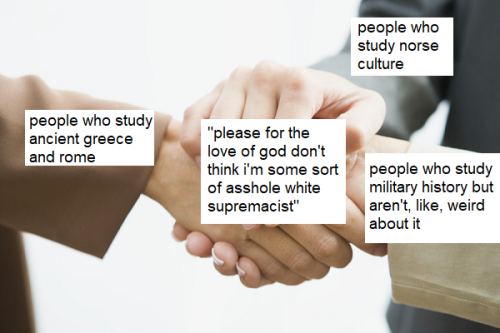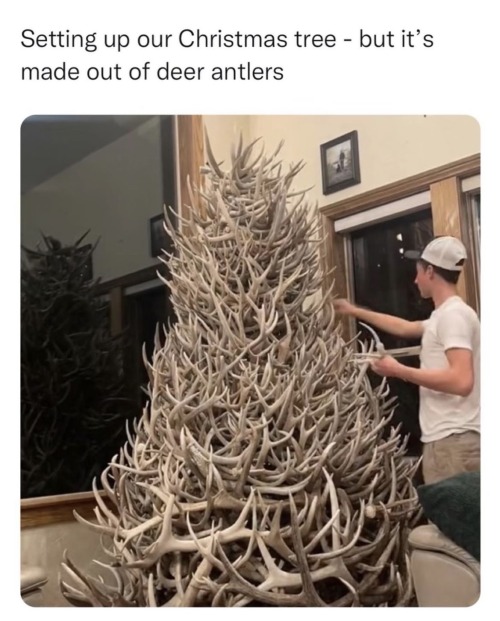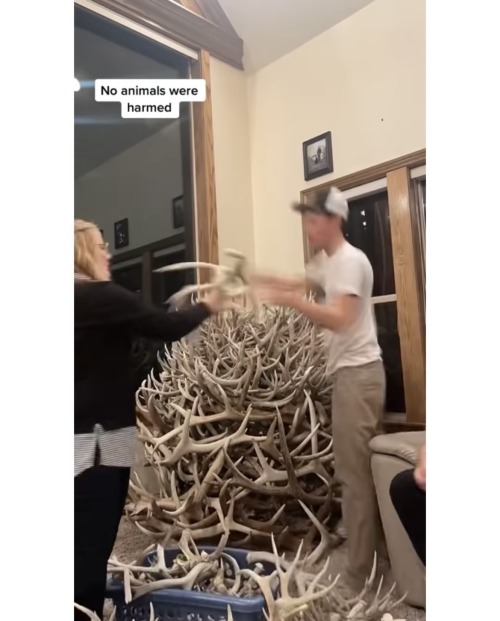Hebrew Should Be Coloured Blue Here
Hebrew should be coloured blue here

Etymology for chess in European languages
More Posts from Enbylvania65000 and Others
The Late Rodentocene: 20 million years post-establishment

Lake It or Leave It: The Great Lakes of Nodera
It is early morning on the continent of Nodera. The twin suns bathe the landscape in a warm orange glow, as they rise together side-by-side on the eastern horizon, closer together in the sky than any other time of the year: midwinter.
The morning light casts its glow upon a tranquil scene near the shores of an enormous aquatic landscape: the Great Lakes of Nodera. The largest inland body of water on the surface of HP-02017, the Great Lakes connect to the sea by a river system opening out to the Centralic Ocean, and is comprised of a system of several interconnnected bodies of water, gouged into the landscape by the shifting tectonics of Nodera and filled up with water by the action of erosion and precipitation ofver the course of countless millenia.
In this tranquil lanlocked lake several signs of life begin to stir in the cool morning breeze, as the residents of the water's edge awaken to begin their day. On the grassy banks, a large, beaver-sized rodent begins to amble about in search of food, its bold stripes serving as a warning to potential predators of its potent defense mechanism, while up above in the sky, soar several winged figures: ones that from a distance one would suppose to be birds -- until they remembered that on this planet, there were no birds at all.
It has been another 10 million years since we last explored the diversity of this planet's evolution, and from those humble creatures of the Middle Rodentocene strange new forms have emerged. Strange new forms that on a surface view uncannily resemble the familiarity of Earth's fauna, but upon a closer look are revealed to be an entirely different creature, molded from their ancestors by the forces of evolution in an ever-changing world.

The Great Lakes of Nodera have been filled by a diverse ecosystem of aquatic life, such as forests of water plants which become home to freshwater shrish: descendants of krill that have become analogues of the fish on Earth and now have colonized this inland body of water as well. Some of them migrated upriver to spawn, found the lakes, and ultimately came to permanently settle there, becoming a part of the local ecosystem-- and a veritable food source for the descendants of the planet's first aquatic hamster, the pondrats (Aquacricetus spp.)
Ten million years have done wonders on the humble pondrat, as it comes to dominate aquatic niches throughout the lake systems. One of the more basal and populous of these are the smellcastors (Castorocricetus spp.), a group of amphibious omnivores that forage for shrish, mollusks and water plants. They are roughly the size of Earth beavers and quite closely resemble them too, save for one conspicuous feature: lacking the beaver's paddle-like tail, or indeed any tail at all, they instead propel themselves through the water with webbed, flipper-like hind feet. Smellcastors are so called for their defensive tactic of spraying an overpowering scent from modified anal musk glands that can seriously irritate a predator's sensitive nose: their bold markings are warnings of their ability, and many predators quickly learn to leave them alone.
Other descendants of the pondrat that make a living in these waters include the lutrons (Lutracricetus spp.), which are smaller and more slender than their striped and smelly cousin and spend far more time in the water, pursuing shrish with grace and agility and seldom emerging onto dry land, where their flippered hind feet make them awkward and clumsy waddlers. Another relative is the pug-billed ratypus (Brachycephalomys platypoides), a bottom-feeding pondrat with a distinctive squashed-in face and wide, sagging lips and cheeks. Long whiskers help probe for small invertebrates in the muddy pond bottom, which the ratypus slurps into its mouth and stores in its cheeks while it swims, surfacing every few minutes to breathe, chew and swallow.
And the life on the lake system isn't limited to just pondrats: in the resource-rich environments of the Great Lakes other lineages have thrived as well. The hamtelopes, specifically the long-legged ratzelles (Cervicricetus spp.), have put their elongated limbs to good use to take advantage of soft water plants growing in the shallows, becoming lanky waders that spend much of their time in knee-high water feasting on the abundance of water plants. Meanwhile, on a higher rung of the food chain lurk the searets (Lutrodiromys spp.): large aquatic ferrats that hunt like crocodiles, ambushing prey like wading hamtelopes and pondrats while swimming half-submerged, with the help of powerful crushing jaws that can drag prey underwater to drown.

But of greater interest are the vaguely-avian flyers that congregate in the skies above the Great Lakes: the ratbats (family Nyctocricetidae). Descended from the flittering jazzhand of ten million years prior, they have webbed wings of skin like bats, and fly in the daytime like birds, but are neither: like all other vertebrates in this planet, they are hamsters, albeit ones that through eons of evolution now barely resemble the familiar chubby rodent that comes to mind with this name.
The clapping, insect-seizing motions of the jazzhand have given rise to active powered flight in the ratbats, with their webbed hands merging with their patagia and becoming a true, functional wing. Two of their fingers have lengthened into supports for their wings, while the other two fingers bear large claws and toe pads, and are used for walking quadrupedally on the ground, with the wing fingers flexible enough to fold out of the way when walking and keeping them from dragging their delicate wings on the ground.
One of the most common ratbats seen in the skies around the Great Lakes is the squift (Nyctocricetus spp.), an agile insectivore that specialized to feast on the abundance of flying insects that breed and nest in water. Swarms of them congregate above the lake's surface during the breeding season, and the squifts are never far behind, darting acrobatically through the swarm to snatch up insects midair. Its close cousin, the duskflapper (Pteromys spp.) has a similar lifestyle, but instead emerges at dawn, dusk and Beta-twilight, feeding on the buffet of flying insects active at this time, and thus avoiding competition with its diurnal relative.
Ratbats have reached a massive amount of diversity since they first achieved powered flight, and among the hundreds of species living in this time are a wide array of different niches: their ranks including not only insectivores but also seed-eaters, nectar-feeders, and even predators of small ground rodents. But most notable are the shrishers (Piscivenatomys spp.), large plunge-divers with wingspans of almost six feet, and are the biggest flyers of the Late Rodentocene. They specialize on feeding on shrish, and thus have long snouts and multi-cusped molars, allowing them a good hold of their slippery prey, and not content to snatch them from the surface, dive in the water like gannets to seize their prey underwater before bursting back into the skies with their meal in tow. Specialized oil glands on their skin keep their fur water repellant, and so shrishers are commonly seen vainly preening themselves constantly, to keep their fur all greased up and resistant to sogginess when diving after their aquatic prey.
The Great Lakes of Nodera, like many isolated ecosystems, has become a sanctuary for unique and endemic lifeforms, and the unusual hamsters that have adapted to live in an aquatic environment. But their isolation is not to last: as East Nodera gradually breaks away from West Nodera with the drifting tectonics, the Great Lakes will soon be opened up to the sea- and with it, the aquatic hamsters, in the distant future, soon find themselves in a vast new body of water ripe for the taking: the Centralic Ocean itself.
▪▪▪▪▪▪▪▪▪
If only I could do that with my friends IRL. A lot of us bake, but we live too far apart
reblog to give warm bread to your mutuals

felt inspired to make this after reading some of the comments on my post about liking history
l gave words of support and likes to those who are affected by the conflict.
Based on this, Tumblr has decided I'm interested in Hamas apologia.



Regardless of what you think of this tree… this comment was my favourite out of the collection of people who didn’t know deer shed their antlers every spring
The perfect storm of intelligence and agility
SMH we Israelis blazed the trail for trans people in Eurovision and now people talking about the queer history of Eurovision either erase Dana International or refuse to mention what country she represented. It is clear that the international LGBT movement does not care for LGBT Israelis. The goy queer population of Europe came out to protest Israel at Eurovision for the temerity of *existing* but did not march in solidarity when LGBT Israelis protested against homophobia and transphobia in our government last year. I do not want to hear a single word about the importance of intersectionality or solidarity again from people who believe Jews and Israelis are exempt form either of them.

dana international 💕 israeli queer royalty 🇮🇱👸🏻
the first trans contestant and winner of eurovision !!!! 🇮🇱
I feel like every writer knows that one person who can't understand that you won't write their ideas, you'll write yours
"Yes, that's an... interesting concept. It's not how I write, it's not the way I think. Write it yourself."
In case if anyone's interested. I am another person one can interact with about this, and can think of many others. Conlanging is much more than just David J. Peterson. In fact, and I mean this without any disrespect for him, I am a bit annoyed how much Peterson, Paul Frommer, Marc Okrand and Tolkien have become in popular conscience pretty much the only conlangers - and so many of those that do know others only know YouTubers. There's so so many of us, and some of the best work is made by those who are of the community but not particularly famous outside the hobby. And some of the best resources on conlanging come from such circles.
so, i don't really know anyone who might find this as exciting as i did, so i thought i'd share it with you instead, lol. i recently wrote a fic in which i did not properly construct a conlang, but i did get to create a lot of place names and colloquialisms based on linguistic shifts and influences from surrounding languages, and it was just so much FUN? like, getting to examine the patterns of the surrounding (related) languages and determine what would be the most likely shifts for the languages in this fictional spot, and then looking at the history of the place itself and the waves of invaders, and how that affected the place names and people names and general linguistic borrowing of the surrounding areas, etc etc.
anyway, i just had such a good time, and i wanted to share it with someone else who might enjoy it! thank you in advance for letting me drop this in your box. <3
That's wonderful! If you enjoyed it here, you'll probably enjoy doing it just for the sake of it. Something I that I think would behoove fantasy authors is having a fleshed out world in which to set stories, and that includes their languages. If you work on them ahead of time, you can then drop in and write the story you want in whatever part of the world you want and all that work will be there for you to draw from. It'll be more like writing a history than writing a story, and all the places where you usually get hung up (what's this character's name going to be...? What's their family...? What's the name of their home town...?) will be easy, and you can focus on the writing itself.
Anyway, glad you enjoyed it, and I hope you can enjoy more in the future!
-
 fawnspiral liked this · 2 years ago
fawnspiral liked this · 2 years ago -
 addicted-to-12th-intro liked this · 2 years ago
addicted-to-12th-intro liked this · 2 years ago -
 hell2electricboogaloo liked this · 2 years ago
hell2electricboogaloo liked this · 2 years ago -
 socialantleredrabbit reblogged this · 2 years ago
socialantleredrabbit reblogged this · 2 years ago -
 socialantleredrabbit liked this · 2 years ago
socialantleredrabbit liked this · 2 years ago -
 krackoski liked this · 3 years ago
krackoski liked this · 3 years ago -
 varixxx liked this · 3 years ago
varixxx liked this · 3 years ago -
 weazel reblogged this · 4 years ago
weazel reblogged this · 4 years ago -
 weazel liked this · 4 years ago
weazel liked this · 4 years ago -
 mayyourbeardnevergrowthin liked this · 4 years ago
mayyourbeardnevergrowthin liked this · 4 years ago -
 cromodinamica liked this · 4 years ago
cromodinamica liked this · 4 years ago -
 drinkingjuice liked this · 4 years ago
drinkingjuice liked this · 4 years ago -
 incantanebbia reblogged this · 4 years ago
incantanebbia reblogged this · 4 years ago -
 ira-online-archive reblogged this · 4 years ago
ira-online-archive reblogged this · 4 years ago -
 ira-online-archive liked this · 4 years ago
ira-online-archive liked this · 4 years ago -
 bigsmilenobitterness liked this · 4 years ago
bigsmilenobitterness liked this · 4 years ago -
 naniare liked this · 4 years ago
naniare liked this · 4 years ago -
 iceblnkluck reblogged this · 4 years ago
iceblnkluck reblogged this · 4 years ago -
 wildermannawyddan reblogged this · 4 years ago
wildermannawyddan reblogged this · 4 years ago -
 wildermannawyddan liked this · 4 years ago
wildermannawyddan liked this · 4 years ago -
 the-stoic-heroic liked this · 4 years ago
the-stoic-heroic liked this · 4 years ago -
 itselisl liked this · 4 years ago
itselisl liked this · 4 years ago -
 asystoly reblogged this · 4 years ago
asystoly reblogged this · 4 years ago -
 loveconfessions reblogged this · 4 years ago
loveconfessions reblogged this · 4 years ago -
 gingganggongdedogongdelagaraga reblogged this · 4 years ago
gingganggongdedogongdelagaraga reblogged this · 4 years ago -
 gingganggongdedogongdelagaraga liked this · 4 years ago
gingganggongdedogongdelagaraga liked this · 4 years ago -
 marshmellobabe liked this · 4 years ago
marshmellobabe liked this · 4 years ago -
 banflipflops liked this · 4 years ago
banflipflops liked this · 4 years ago -
 digaag liked this · 4 years ago
digaag liked this · 4 years ago -
 philtstone liked this · 4 years ago
philtstone liked this · 4 years ago -
 eisthenameofme liked this · 4 years ago
eisthenameofme liked this · 4 years ago -
 skinnykatia reblogged this · 4 years ago
skinnykatia reblogged this · 4 years ago -
 radicalposture reblogged this · 4 years ago
radicalposture reblogged this · 4 years ago -
 michelpangelo reblogged this · 4 years ago
michelpangelo reblogged this · 4 years ago -
 michelpangelo liked this · 4 years ago
michelpangelo liked this · 4 years ago -
 peggydumpfuck liked this · 4 years ago
peggydumpfuck liked this · 4 years ago -
 ohemaa-warrior reblogged this · 4 years ago
ohemaa-warrior reblogged this · 4 years ago -
 poprdaper liked this · 4 years ago
poprdaper liked this · 4 years ago -
 jlymans reblogged this · 4 years ago
jlymans reblogged this · 4 years ago -
 iwillbeyourophelia liked this · 4 years ago
iwillbeyourophelia liked this · 4 years ago -
 breatheinandlive liked this · 4 years ago
breatheinandlive liked this · 4 years ago -
 sweet-shine liked this · 4 years ago
sweet-shine liked this · 4 years ago -
 lordansketil liked this · 4 years ago
lordansketil liked this · 4 years ago -
 anonymphae reblogged this · 4 years ago
anonymphae reblogged this · 4 years ago

